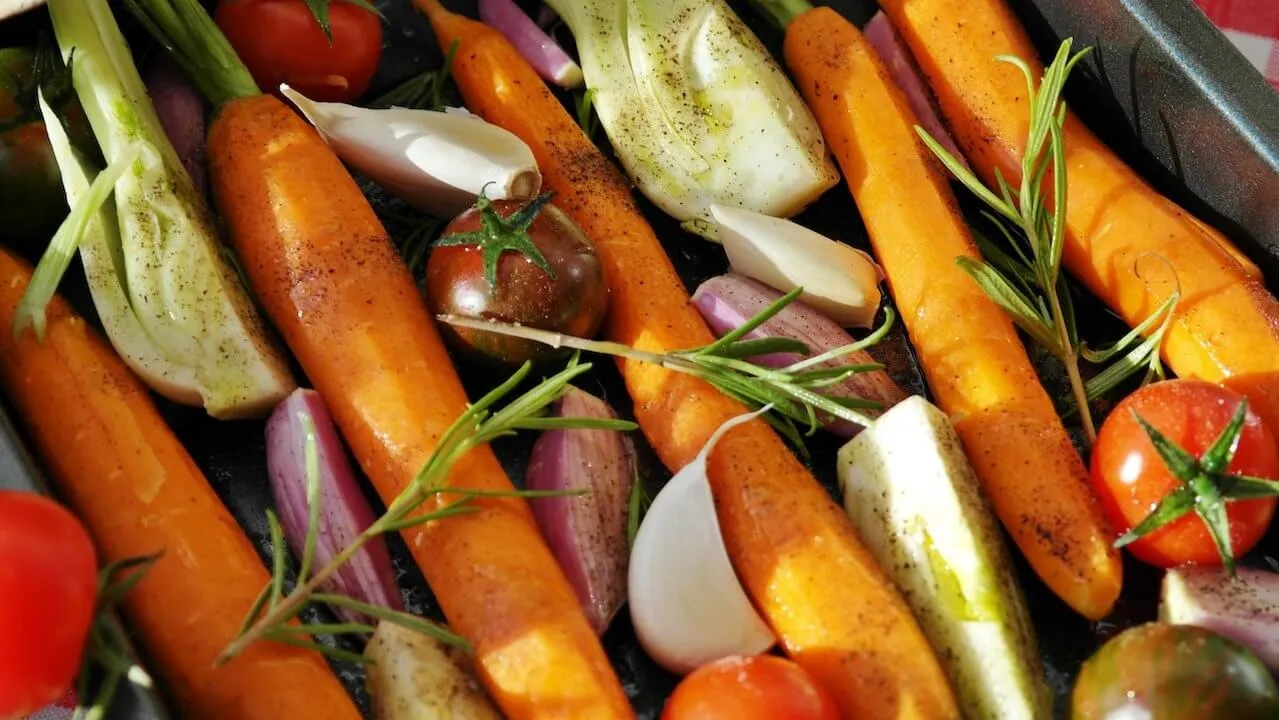Everyone knows vegetables are healthy, but what you may not know is that different vegetables offer vastly different benefits. Depending on your overall goals and needs, some veggies will be better for you than others. It’s important for people with certain conditions, like diabetes, to pay close attention to what they’re eating in order to optimize glucose control.
In this article, we’re revealing the best vegetables for diabetics so you can incorporate more of these healthy veggies into your everyday routine.
{{mid-cta}}
10 Low-Carb Veggies for a Diabetes-Friendly Diet

Focusing on high-fiber, low-fat, low-carb veggies is ideal for supporting healthy blood sugar levels. Let’s break down why this is particularly important for people with diabetes.
Type 2 Diabetes
This health condition develops when cells in your body become less sensitive and ultimately resistant to insulin. This phase is known as prediabetes. Insulin resistance triggers your pancreas to produce more and more insulin. Over time, your pancreas is unable to keep up with the high demand for insulin, causing your blood sugar to rise to dangerous levels. If not properly managed, high blood sugar can lead to high blood pressure, heart disease, kidney disease, and loss of vision. Type 2 diabetes is typically referred to as “adult-onset diabetes;” however, more recently, there has been an increase in teens and children being diagnosed with this condition.1
Type 1 Diabetes
Type 1 diabetes makes up about 10% of all cases of diabetes. Although less common than type 2 diabetes, rates of type 1 diabetes are on the rise around the world.2 This condition also results from insufficient insulin production and causes blood sugar spikes that can lead to serious health concerns. Patients with type 1 diabetes typically require insulin injections to balance their blood sugar.
Unlike type 2 diabetes, which can be prevented and managed with lifestyle changes, type 1 diabetes is thought to be the result of an autoimmune reaction and is largely associated with genes (rather than lifestyle).3
In both cases of diabetes, a healthy diet is essential for keeping blood sugar in check. A balanced diet with plenty of high-fiber foods like non-starchy vegetables will fill you up while optimizing blood glucose levels, as well as provide an array of other health benefits. For optimal diabetes management, it’s essential to read food labels and understand the fiber content and glycemic index of the foods you eat. In addition to prioritizing veggies, practices like food logging or food tracking, wearing a continuous glucose monitor (CGM), paying attention to portion sizes, and counting carbs can all be helpful ways to support weight loss and effectively manage your blood glucose levels.
When it comes to veggies, aim for colorful, low-carb options. Below is a list of the top vegetables for diabetics. Remember to work with your healthcare provider or a registered dietitian to determine the best food choices and meal plan for you.
1. Carrots
One medium carrot has approximately 6g of carbs and 2g of dietary fiber. Carrots are an excellent source of vitamin A and also provide vitamin C, vitamin K, and the vision-boosting phytonutrients lutein and zeaxanthin. In animal studies, consumption of carrots has been shown to lower blood sugar levels.4
2. Broccoli
Broccoli is one of the healthiest veggies available. One cup of broccoli has about 5g of carbohydrates and 2g of fiber. Broccoli is high in vitamin C and also contains essential minerals like calcium and magnesium. In addition, broccoli contains the phytonutrient sulforaphane, which is associated with improved insulin sensitivity and lower overall risk of diabetes.5
3. Arugula
Any leafy green is a good choice, but arugula is exceptionally nutrient-dense. With less than 1g of carbs per cup, arugula provides vitamins A and K and also contains the important B vitamin, folate. Arugula is in the same family of vegetables as broccoli (known as cruciferous) and also contains sulforaphane, which has powerful anti-diabetic properties.5
4. Cabbage
Purple (or red) cabbage is one of the most nutrient-dense vegetables out there. With only 7g of carbohydrates per 100g, cabbage is low-carb and loaded with nutrients like vitamin C, vitamin B6, calcium, magnesium, and potassium. Purple cabbage contains the phytonutrient anthocyanin, which has antidiabetic effects and has been shown to support heart health.6
5. Spinach
Leafy vegetables like spinach are a great addition to any diet. Similar to arugula, spinach has less than 1g of carbs per serving and is high in calcium, iron, and magnesium. Most people think of spinach in a salad, but it can also be a great addition to soups and smoothies. Spinach contains phytochemicals called phenols that have been shown to support glycemic control and reduce diabetic complications.7
6. Tomatoes
One medium tomato has approximately 5g of carbs and 2g of fiber. Tomatoes provide a good source of vitamin C, vitamin A, and potassium. Tomatoes are rich in the phytonutrient lycopene, a powerful antioxidant that can reduce oxidative stress and improve glucose control in patients with type 2 diabetes.8
7. Cucumber
Cucumbers are not only refreshing, they’re also super low-carb and provide rare minerals like molybdenum and manganese. With only 3g of carbs per 100g, they’re the perfect way to satisfy your craving for something crisp and crunchy. Best of all, cucumbers have been shown to offer protective effects against diabetes complications.9
8. Brussels sprouts
One cup of Brussels sprouts has about 8g of carbs and 3g of fiber per cup. Brussels sprouts are high in vitamin C, vitamin A, and folate. Like broccoli and arugula, Brussels sprouts also fall into the cruciferous vegetable family and are an excellent source of the anti-diabetic compound sulforaphane.
9. Avocado
Avocados are known for their healthy fats, but did you know that one whole avocado only has 17g of carbs, 13g of which are fiber? It’s been shown that increased avocado consumption improves glucose control and lowers the overall risk of developing diabetes.10
10. Celery
Celery is virtually carb-free while still offering important minerals like magnesium, potassium, and phosphorus. One study found that celery leaf extract reduced blood glucose levels both before and after meals.11
<p class="pro-tip"><strong>Also Read: </strong><a href=types-of-vegetarian-diets>7 Types of Vegetarian Diets Explained</a>.</p>
Using a CGM with Signos: Real-Time Data, Backed by AI
Signos pairs a real-time glucose biosensor with AI trained on tens of millions of data points to deliver personalized, science-backed guidance. See exactly how your body responds, and take action.
Learn how it works. Ready to get started? Join now.
Topics discussed in this article:
References
- https://www.cdc.gov/diabetes/basics/type2.html#:~:text=About%2038%20million%20Americans%20have,adults%20are%20also%20developing%20it.
- https://www.ncbi.nlm.nih.gov/pmc/articles/PMC7146037/
- https://www.cdc.gov/diabetes/basics/what-is-type-1-diabetes.html
- https://www.ncbi.nlm.nih.gov/pmc/articles/PMC6047871/
- https://www.sciencedirect.com/science/article/pii/S2667031323000271
- https://www.ncbi.nlm.nih.gov/pmc/articles/PMC9692260/
- https://www.ncbi.nlm.nih.gov/pmc/articles/PMC10245046/
- https://www.ncbi.nlm.nih.gov/pmc/articles/PMC9000630/
- https://www.ncbi.nlm.nih.gov/pmc/articles/PMC4916550/
- https://www.ncbi.nlm.nih.gov/pmc/articles/PMC10489295/
- https://www.ncbi.nlm.nih.gov/pmc/articles/PMC5885092/




.svg)










.svg)
.svg)
.svg)
.svg)
.svg)
.svg)
.svg)
